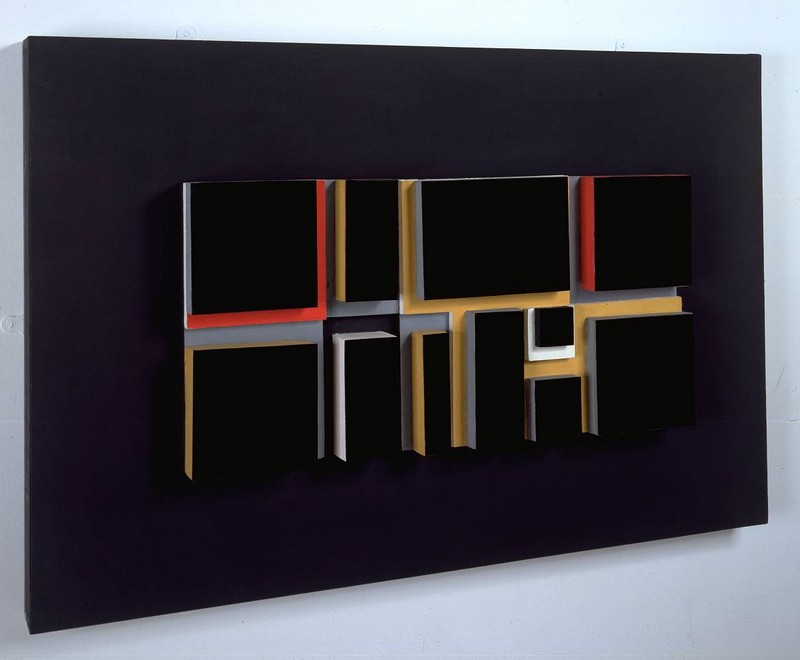Constructionism
07 Jan 2013 - 05 Oct 2015

Mary Martin
Black Relief 1957-circa 1966
Painted wood, board and plastic
object: 764 x 1140 x 148 mm
Presented by the Friends of the Tate Gallery 1987© The estate of Mary Martin
Black Relief 1957-circa 1966
Painted wood, board and plastic
object: 764 x 1140 x 148 mm
Presented by the Friends of the Tate Gallery 1987© The estate of Mary Martin
This room brings together artists from the mid-twentieth century whose work explored geometric structures, and the relationship of form, space and movement.
While the large central gallery in this wing looks at the abstract art of the 1920s and 1930s, this room focuses on developments of the 1950s and 1960s. In the earlier period, abstraction was defined by European movements such as constructivism and concrete art, which emphasised ordered geometric forms. Their successors drew upon but also disrupted these established modes. Some of the artists included here were inspired by mathematical systems or naturally occurring patterns such as the Golden Section or the Fibonacci sequence, while others developed a more organic, asymmetrical and therefore destabilised geometry. In addition, they introduced a greater concern with the relationship of the viewer to the art object, emphasising physical and sensory participation, and with aspects of space, time, light and movement.
The display takes its title from a group of artists whose work embodied an extension of constructivism in post-war Britain from about 1950 through the 1960s. Taking a broader view, the room also includes a number of other artists who worked in this vein, such as those associated with the neo-concrete movement in Brazil in the 1950s and 1960s.
Curated by Tanya Barson and Matthew Gale
While the large central gallery in this wing looks at the abstract art of the 1920s and 1930s, this room focuses on developments of the 1950s and 1960s. In the earlier period, abstraction was defined by European movements such as constructivism and concrete art, which emphasised ordered geometric forms. Their successors drew upon but also disrupted these established modes. Some of the artists included here were inspired by mathematical systems or naturally occurring patterns such as the Golden Section or the Fibonacci sequence, while others developed a more organic, asymmetrical and therefore destabilised geometry. In addition, they introduced a greater concern with the relationship of the viewer to the art object, emphasising physical and sensory participation, and with aspects of space, time, light and movement.
The display takes its title from a group of artists whose work embodied an extension of constructivism in post-war Britain from about 1950 through the 1960s. Taking a broader view, the room also includes a number of other artists who worked in this vein, such as those associated with the neo-concrete movement in Brazil in the 1950s and 1960s.
Curated by Tanya Barson and Matthew Gale
